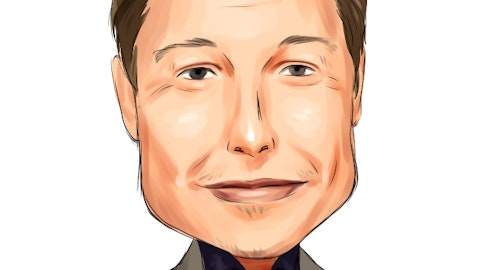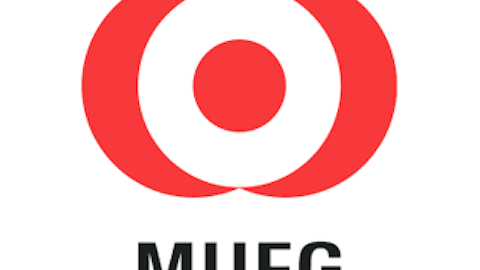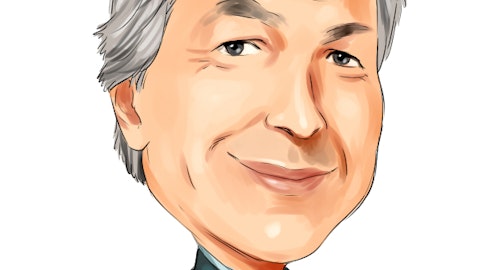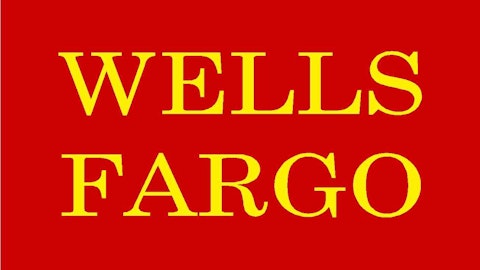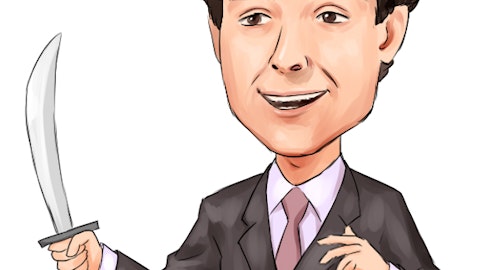
Source: Capital One annual report.
The average CEO tenure for all companies is a little over eight years, and for the 12 biggest U.S. banks, the figure stands at slightly less than seven years. Yet one CEO, Richard Fairbank — the founder, chairman, and CEO of Capital One Financial Corp. (NYSE:COF) — has maintained his post for nearly two decades, and his bank’s performance during his tenure has returned four times as much to shareholders as the S&P 500 has.
Fairbank has been with Capital One Financial Corp. (NYSE:COF) since he founded it 25 years ago as a division of Signet Bank. And he’s served as CEO for the past 19 years, ever since it went public as its own entity. By comparison, the three best-known CEOs of the banking industry — Jamie Dimon of JPMorgan Chase & Co. (NYSE:JPM), Brian Moynihan of Bank of America Corp (NYSE:BAC), and Lloyd Blankfein of Goldman Sachs Group, Inc. (NYSE:GS) — have a combined tenure that’s less than Fairbank’s.

Source: Company history reports.
Fairbank doesn’t outpace them in tenure alone. He also eclipses them in total market returns:
| CEO | Start Date | Total Return | S&P 500 Return |
|---|---|---|---|
| Richard Fairbank, Capital One | 7/26/1994 | 1,072% | 255% |
| Jamie Dimon, JPMorgan Chase & Co. (NYSE:JPM) | 12/31/2005 | 27% | 29% |
| Brian Moynihan, Bank of America Corp (NYSE:BAC) | 10/1/2010 | 7% | 43% |
| Lloyd Blankfein, Goldman Sachs Group, Inc. (NYSE:GS) | 5/31/2006 | 2% | 29% |
Fairbank’s longevity comes down to his continual ability to innovate. When he was a consultant before launching Capital One Financial Corp. (NYSE:COF), he saw the potential to use data and information to develop a credit card offering that fit each customer’s needs and creditworthiness.
While the industry was favoring a cookie-cutter approach to credit cards — a flat 19.8% interest rate and a $20 annual fee — Fairbank seized the opportunity to disrupt that approach by offering a wide variety of credit cards to consumers based on their individual characteristics. This now-commonplace approach was unique when he launched it in the 1980s.
That spirit of innovation has allowed Fairbank and Capital One Financial Corp. (NYSE:COF) to remain atop an industry often known for stuffiness and inflexibility. It also helped Capital One Financial Corp. (NYSE:COF) make an early push into cyberspace: The company launched one of the first online-centric banks in 1994, and it became the world’s third largest in 2011. It also acquired ING Direct, the largest online bank, in 2011.
Fairbank has certainly done well for himself during his tenure, but will he continue to do well for shareholders and their capital? Let’s take a look.
Capital deployment
In his letter to shareholders from Capital One’s most recent annual report, Fairbank stated:
We’ll deploy capital to fund growth with attractive and resilient returns, and to pay a consistent and meaningful dividend. And we expect that our capital generation will support significant share repurchases. We’re committed to returning capital to our shareholders through both meaningful dividend and share repurchases.
It’s easy for CEOs to proudly proclaim their capital plans and not deliver, but Fairbank has a history of staying true to his word. He identified three areas where Capital One Financial Corp. (NYSE:COF) will deploy its capital, so let’s see what the bank has done recently regarding funding growth, meaningful dividends, and share repurchases. He’s followed through with two of those priorities this year alone.
Funding growth
Since 2005, Capital One has been on a buying spree:
| Year | Party | Amount (Billions) |
|---|---|---|
| 2005 | Hibernia Bank | $5.0 |
| 2006 | North Fork Bank | $14.6 |
| 2008 | Chevy Chase Bank | $2.3 |
| 2011 | ING Direct | $9.0 |
| 2011 | HSBC U.S. Credit Card | $2.5 |
| Total | $33.4 | |
Source: Capital One investor relations.
